From Summer Shine to Fall Fine: Smart Home Projects to Tackle Before the First Frost
Jody Blue • August 27, 2025
As patios wind down and pumpkin spice ramps up, fall is the perfect reset for your home—and your homeowner game plan. These quick wins boost comfort, curb appeal, and efficiency now, and set you up for a low-stress winter (and a strong spring market).
1) Safety & “silent leak” checks (Weekend-ready)
- Clean gutters & downspouts. Add leaf guards where trees overhang.
- Roof scan. Look for lifted shingles, cracked flashings, or moss.
- Seal the shell. Re-caulk window/door trim; replace weatherstripping.
- Test alarms. New batteries for smoke/CO detectors; add one near bedrooms.
Why it matters: Prevent water intrusion and heat loss before storms roll in.
2) Heat smarter, not harder
- Furnace/boiler tune-up and filter change.
- Smart thermostat with schedules and geofencing.
- Draft hunt. Foam gaskets behind outlets, door sweeps on exterior doors.
ROI tip: Efficiency upgrades lower monthly bills and can improve lender ratios if you’re eyeing a refinance later.
3) Fall-proof your yard (so spring you says “thanks”)
- Aerate + overseed + fall fertilize for thicker turf next year.
- Trim trees/shrubs away from siding and power lines.
- Mulch perennials and plant spring bulbs now.
- Shut off/bleed exterior taps and store hoses to avoid burst pipes.
4) Extend outdoor season (cozy edition)
- Portable fire pit or propane heater + layered blankets.
- Path/step lighting for darker evenings (solar or low-voltage).
- Weather-resistant storage for cushions/tools to preserve value.
Neighborhood curb appeal: Warm lighting and tidy beds make a big first impression if you list in shoulder season.
5) Water management = winter peace of mind
- Re-grade low spots and add downspout extensions (2–3+ metres).
- Check sump pump (and backup).
- Look for efflorescence or damp corners in the basement.
6) Mini-renos that punch above their weight
- Entry/mudroom upgrade: hooks, bench, boot trays, closed storage.
- Laundry room tune-up: counter over machines, sorting bins, task lighting.
- Kitchen refresh: new hardware, tap, and under-cabinet lighting in one afternoon.
Budget guide: Many of these land under a micro-reno budget—perfect for a modest line of credit.
7) Indoor air quality tune-up
- Deep clean vents and dryers (including the rigid duct).
- Add door mats (exterior + interior) to catch grit/salt.
- Houseplants or HEPA purifier for closed-window months.
Fast Timeline (pin this to the fridge)
Late August–September
- Gutters/downspouts, roof/caulking, HVAC service, lawn care, plant bulbs, exterior tap shut-off plan, path lighting.
October
- Weatherstripping/sweeps, fire pit setup, organize mudroom/garage, test alarms, sump check, downspout extensions, dryer vent cleaning.
Financing smarter: make your mortgage work for your home
- Annual mortgage check-in. As rates, income, and goals evolve, a quick review can free up cash flow or open options for a small fall project budget.
- HELOC vs. top-up refinance. For bite-size projects, a HELOC can be flexible. For bigger renos you plan to pay down, a top-up refi might make more sense.
- Bundle & prioritize. Knock out the high-impact, low-cost items first (air sealing, safety, water management) before the cosmetic upgrades.
Not sure which route fits your fall plans? We’ll run the numbers and map the best financing path for your specific budget and goals.
Quick Checklist (copy/paste)
- ☐ Clean gutters/downspouts; add guards
- ☐ Roof & flashing visual check
- ☐ Re-caulk, weatherstrip, add door sweeps
- ☐ HVAC service + new filter
- ☐ Aerate/overseed/fertilize; trim trees; plant bulbs
- ☐ Path & entry lighting
- ☐ Drain/bleed outdoor taps; store hoses
- ☐ Downspout extensions; sump test
- ☐ Dryer vent cleaning
- ☐ Mudroom/garage organization
- ☐ Schedule mortgage review / discuss HELOC vs refi
Ready to make fall your low-stress season?
Book a quick fall mortgage check-up—15 minutes to see if a small credit line or a tweak to your current mortgage could cover your priority projects without straining cash flow.

If you’re in the early stages of planning to buy either your first home or your next home, you’ve come to the right place! Even if you’ve been through it before, the home buying process can be daunting, but it doesn’t have to be when you have the right people on your side! The purpose of this article is to share a high-level view of the home buying process. Obviously, the finer details can be addressed once you’ve submitted an application for pre-approval. But for now, here are some of the answers to general questions you may have as you work through your early preparations. Are you credit-worthy? Having an established credit profile is essential when applying for a mortgage. For your credit to be considered established, you’ll want to have a minimum of two trade lines (credit cards, loans, or lines of credit) with a minimum limit of $2500, reporting for a period of at least two years. From there, you’ll want to make sure that your debt repayment is as close to flawless as possible. Think of it this way: Why would a lender want to lend you money if you don’t have a history of timely repayment on the loans you already have? Making your payments on time, as agreed, is crucial. We all know, however, that mistakes can happen and payments might get missed. If that's the case, it’s best to catch up as quickly as possible! Late payments only register on your credit report if you're past due by 30 days. How will you make your mortgage payments? When providing you with a mortgage, lenders are trusting you with a lot of money. They'll want to feel really good about your ability to pay that money back, over an agreed period of time, with interest. The more stable your employment, the better chances you have of securing mortgage financing. Typically, you’ll want to be employed in a permanent position or have your income averaged over a period of two years. If you’re self-employed, expect to provide a lot more documentation to substantiate your income. How much skin do you have in the game? If you're borrowing money to buy a home, you’re going to have to bring some money to the table. The best down payment comes from accumulating your own funds supported by documents proving a 90-day history in your bank account. Other down payment sources, such as a gift from a family member or proceeds from another property sale, are completely acceptable. In Canada, 5% down is the minimum requirement. However, depending on the purchase price, it might be more. Also, you need to be aware that you will likely have to prove access to at least 1.5% of the purchase price to be allocated for closing costs. How much can you afford? Here’s the thing. What you can afford on paper and what you can afford in real life are often very different amounts. Just because you feel you can afford the proposed mortgage payments, know that you will have to substantiate everything through documentation. The amount you actually qualify to borrow is based on many factors, certainly too many to list in an article designed to provide you with an overview of the home buying process. However, with that said, it’s never too early in the home buying process to seek professional advice. Our services come at no cost to you; it would be our pleasure to help. Working with an independent mortgage professional will allow you to assess your credit-worthiness, provide insight on how a lender will view your income, help you plan for a down payment, and nail down exactly how much you can afford to borrow. And if you need help putting together a plan to improve your financial situation, we can do that too. If you’d like to discuss your financial situation and put together a plan to secure mortgage financing, please get in touch!

One of the major qualifiers lenders look at when considering your application for mortgage financing is your debt service ratios. Now, before we get started, if you prefer to have someone walk through these calculations with you, assess your financial situation, and let you know exactly where you stand, let’s connect. There is no use in dusting off the calculator and running the numbers yourself when we can do it for you! However, if you’re someone who likes to know the nitty-gritty of how things work instead of simply accepting that's just the way it is, this article is for you. But be warned, there are a lot of mortgage words and some math ahead; with that out of the way, let’s get started! “Debt servicing” is the measure of your ability to meet all of your financial obligations. There are two ratios that lenders examine to determine whether you can debt service a mortgage. The first is called the “gross debt service” ratio, or GDS, which is the percentage of your monthly household income that covers your housing costs. The second is called the “total debt service” ratio, or TDS, which is the percentage of your monthly household income covering your housing costs and all your other debts. GDS is your income compared to the cost of financing the mortgage, including your proposed mortgage payments (principal and interest), property taxes, and heat (PITH), plus a percentage of your condo fees (if applicable). Here’s how to calculate your GDS. Principal + Interest + Taxes + Heat / Gross Annual Income Your TDS is your income compared to your GDS plus the payments made to service any existing debts. Debts include car loans, line of credit, credit card payments, support payments, student loans, and anywhere else you’re contractually obligated to make payments. Here’s how to calculate your TDS. Principal + Interest + Taxes + Heat + Other Debts / Gross Annual Income With the calculations for those ratios in place, the next step is to understand that each lender has guidelines that outline a maximum GDS/TDS. Exceeding these guidelines will result in your mortgage application being declined, so the lower your GDS/TDS, the better. If you don’t have any outstanding debts, your GDS and TDS will be the same number. This is a good thing! The maximum ratios vary for conventional mortgage financing based on the lender and mortgage product being offered. However, if your mortgage is high ratio and mortgage default insurance is required, the maximum GDS is 39% with a maximum TDS of 44%. So how does this play out in real life? Well, let’s say you’re currently looking to purchase a property with a payment of $1700/mth (PITH), and your total annual household income is $90,000 ($7500/mth). The calculations would be $1700 divided by $7500, which equals 0.227, giving you a gross debt service ratio of 22.7%. A point of clarity here. When calculating the principal and interest portion of the payment, the Government of Canada has instituted a stress test. It requires you to qualify using the government's qualifying rate (which is higher), not the actual contract rate. This is true for both fixed and variable rate mortgages. Now let’s continue with the scenario. Let’s say that in addition to the payments required to service the property, you have a car payment of $300/mth, child support payments of $500/mth, and between your credit cards and line of credit, you’re responsible for another $700/mth. In total, you pay $1500/mth. So when you add in the $1700/mth PITH, you arrive at a total of $3200/mth for all of your financial obligations. $3200 divided by $7500 equals 0.427, giving you a total debt service ratio of 42.7%. Here’s where it gets interesting. Based on your GDS alone, you can easily afford the property. But when you factor in all your other expenses, the TDS exceeds the allowable limit of 42% (for an insured mortgage anyway). So why does this matter? Well, as it stands, you wouldn’t qualify for the mortgage, even though you are likely paying more than $1700/mth in rent. So then, to qualify, it might be as simple as shuffling some of your debt to lower payments. Or maybe you have 10% of the purchase price saved for a downpayment, changing the mortgage structure to 5% down and using the additional 5% to pay out a portion of your debt might be the difference you need to bring it all together. Here’s the thing, as your actual financial situation is most likely different than the one above, working with an independent mortgage professional is the best way to give yourself options. Don’t do this alone. Your best plan is to seek and rely on the advice provided by an experienced independent mortgage professional. While you might secure a handful of mortgages over your lifetime, we do this every day with people just like you. It’s never too early to start the conversation about mortgage qualification. Going over your application and assessing your debt service ratios in detail beforehand gives you the time needed to make the financial moves necessary to put yourself in the best financial position. So if you find yourself questioning what you can afford or if you want to discuss your GDS/TDS ratios to understand the mortgage process a little better, please get in touch. It would be a pleasure to work with you, we can get a preapproval started right away.



